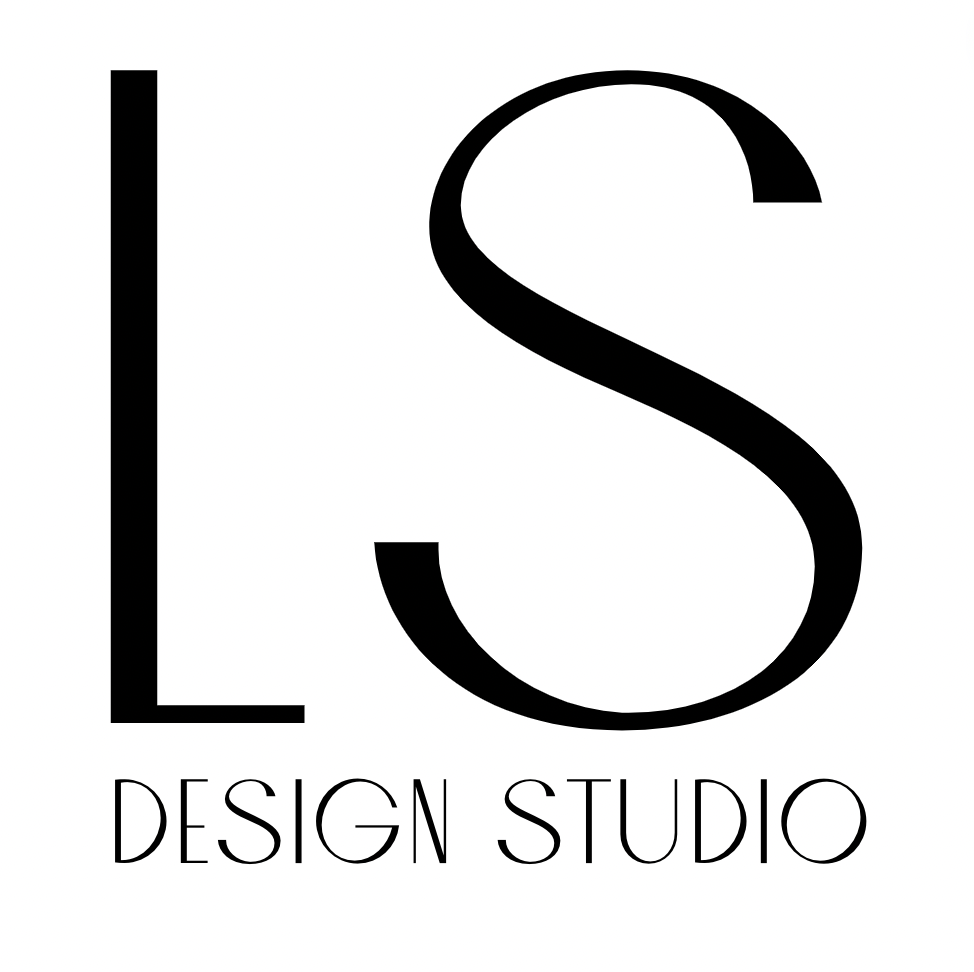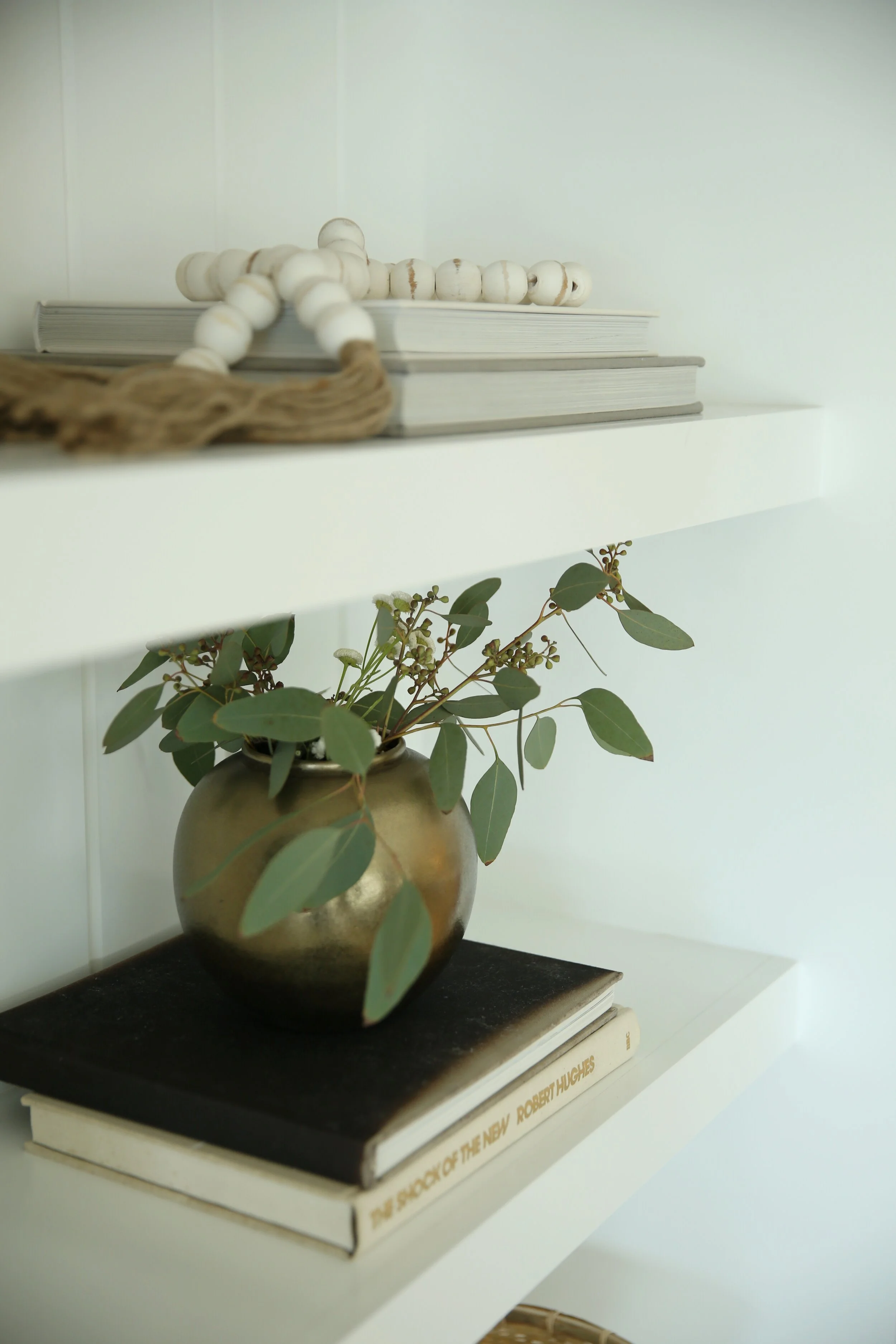Shelf Styling 101
Styling your shelves is one of the best (and soon to be easiest!) ways to make a space feel beautifully curated, effortlessly balanced, and most importantly- a perfect reflection of you. We frequently get asked questions like “How do I know where to put everything on my shelves?” or “Where do I shop for accessories?” and of course the most frequent, “Where do I even start?!”
Today we want to break down our key tips and tricks for styling shelves so that you will have a show-stopping work of art!
Dimensions & Spacing
The first step is to clear everything off and start with a blank canvas. Next gather all potential styling items and group them by size- this will help determine if you need to shop for taller or shorter items so you have a good mix of both. Taking note of how many shelves you have, length, and height of each will also be helpful in deciding what size accessories to shop for! [In this blog we will also tell you our Sourcing tips for buying accessories!] Make sure your tallest item is a few inches shorter than the height of your shelves, so the accessory takes up visual space without feeling out of scale.
Keep in mind when shopping that you want to mix large and small items to give your shelves balance. Too many small decor items can make your shelves look cluttered, while too many large items can make your shelves look empty.
We recommend starting with your largest items to help create "focal points" throughout your shelving vignette. When styling #ProjectStylingbytheSea, we incorporated a large tray on the bottom shelf to add visual interest and "ground" the design. We also incorporated our tallest item, the woven round bowl, centered on our top shelf to guide your eye through the shelf vignette.
When placing items on your shelves, use the full depth of your shelf. Don't be afraid to stagger or overlap items, which helps create balance and depth. That said, the shelf doesn’t need to be full to feel complete. Negative space between groups and objects is important to give breathing room and allow the groups to stand on their own. Treat each group as it's own "moment" instead of trying to style the full length of the shelf as one unit.
Color Scheme
An important step in helping you plan your shelving accessory layout is choosing a few colors / finishes to focus on. In #ProjectStylingbytheSea, we focused on using brass accents, greenery, hints of blue, pops of black and neutral beige tones through different mediums. Each of these color selections are placed throughout the smaller groups to balance the overall picture. Notice that each group is made up of different elements from our color scheme versus choosing one color for the whole group (ex: we used a black book stacked on top of a cream book and finished with a brass pot full of greenery). When you step back and look at the shelves overall, you are able to see the vignette as a whole, rather than your eye being drawn to one color group over another. Knowing that you want to disperse the colors throughout the shelves, it is helpful to step back periodically while styling, check your balance, and adjust as needed.
Sourcing
Our biggest tip when sourcing the accessories for your shelves is to first start in your home. What do you have laying around that just isn’t cutting it by itself? Are there any family heirlooms hidden in storage boxes or tucked into closet corners that aren’t getting the admiration they deserve? Anyone can go into a Target or Homegoods and put together a great set of accessories, but the ones that will make your shelves stand out are the ones that have a deeper meaning, are tied to invaluable memories, or are a reminder of who you are or where you’ve been.
“Growing up, my family always had an old pair of my great grandpa’s glasses sitting on our bookshelf looking like they were straight out of an antique show. You would never think to put glasses on a bookshelf, but their sentimental value brought so much interest to the shelves and gave new life to the simple pair of glasses.”
-Lilli
Another great spot for books and accessories are thrift stores, consignment shops, and antique malls. These types of stores can be incredibly overwhelming if you don’t know exactly what you’re looking for, but our biggest piece of advice is to spend time and really look at each piece individually. That dusty vase may look like it’s seen better days when it is in a sea of old, floral ottomans and wooden mirrors- but when you look at it on its own, you might be able to see the potential it could have to add character to your shelving vignette. (Stay tuned for a whole blog dedicated to second hand home decor shopping tips!)
Finally, we suggest finding your filler pieces at the larger chain retail stores such as Target, Homegoods, and World Market. Each season, they restock with unique accessory pieces that allow you to add modern and “trending” items to your shelves. Pro tip: Marshall’s online is the best spot for high end coffee table books- thank us later!
Variation & Mixing Mediums
When styling, try to do one shelf at a time. This will help you finish each grouping before moving onto the next. Each shelf should be different, even if you are styling several bookcases near each other. Here are some of our best tips to help create variation in your shelves:
1. Mix up the book placement – Try a mix of vertical and horizontal arrangements. We also love stacking books and adding a decorative object on top. If you have hardcover books laying around that don’t quite fit your aesthetic, try removing the book jacket and you might be surprised to find a solid color spine that works with your color scheme! You can also turn the books around to show the pages instead of the spine for a more simple and neutral look.
2. Incorporate decorative objects – Think sculptural. A beautiful bowl, plate or even a stack of boxes. That accessory you got while vintage shopping will be perfect for shelf styling! Not every piece on your shelves has to be functional. This is where you can get a little more creative!
3. Add something natural – It's also important to incorporate organic materials. This can be anything from a plant, rocks, or wooden elements. These items will help contrast some of the decorative objects by bringing in natural elements to ground the design.
4. Use Artwork – Definitely incorporate artwork into your shelf vignette. You can prop pieces on the shelves and even add family photos in frames. We recommend making all of your pieces face forward on the square instead of placing them on an angle. You can also lean a larger photo and stack a smaller one in front to add layers & dimension. Try adding different art mediums throughout- for example, in #ProjectStylingbytheSea, we layered a framed newspaper article behind a bright vintage art piece. This is yet another way to add interest in your selections!
When it comes to shelf styling, there is no equation for creating a “perfect” look. Using the above tips, you will be able to put together a styled shelf that is balanced and cohesive yet personal and meaningful!
xo
-Lilli & Sav





